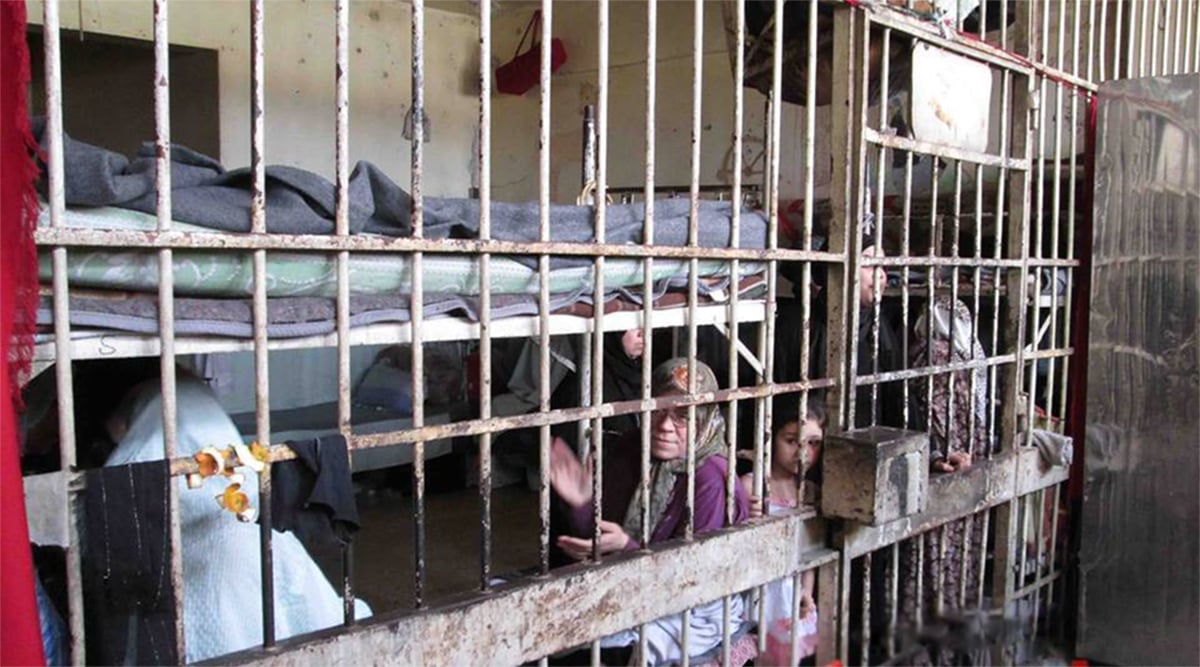
Languages
Available In
SNHR has issued an extensive report on 8 July, 2013 on Aleppo central prison where we shed the light on the prisoners who are being tortured and harassed at the hands of the government forces. Afterwards, many changes have occurred; the rebels started a siege on the prison on 13 July, 2013, and the government forces have broken into the prison recently on 22 May, 2014. Therefore, we felt the necessity to issue a second report in order to address the recent changes.
The methodology of this report is based on the investigations conducted by SNHR in Aleppo governorate in addition to our members in Aleppo. Additionally, we contacted one member of the Red Crescent and one former prison who was released from Aleppo Central Prison. Please know that we changed the names of the witnesses upon their request.
The prison is on two highways that connect Aleppo with its northern countryside, this important strategic location incentivized the rebels to carry out a military operation, named “Releasing the prisoners”, against the prison to set the prisoners free. The operation consisted of imposing a siege on the prison and executing multiple strikes.
This caused a big humanitarian crisis to more than 4500 prisoners including 48 women as the living condition inside the prison have worsen dramatically; tens died of starvation and cold; in the summer of 2013, the prisoners had to burn their clothes in order to make bread using the flour they had. In the winter of 2014, they almost were out of clothes facing the bitter cold. Due to this conditions, many prisoners were infected with dysentery which caused the death of 17 people at least.
The prisoners became between the hammer and the anvil as the rebels weren’t able to break into the prison and there were no enough food and supplies in addition to the torture that was getting more brutal.
The Syrian Red Crescent’s intervention teams have carried out more than 137 humanitarian missions from mid-July, 2013 to 17 May, 2014 that included entering cooked food, bread, safe-drinking water and medications into the prison
Some of the prisoners whose sentences have ended were getting out with the Red Crescent teams. The number of the documented detainees who have been set free according to the Red Crescent was 945 prisoners.
Mr. Mahmoud Nou’man, a former prisoner at Aleppo Central Prison who was released on 8 December, 2013, tells us about the conditions inside the prison:
“With the start of the rebels’ siege of the prison in May, 2013, the security forces responded by preventing the prisoners from “breathing”; they didn’t allow the prisoners to go out to the yards and doubled the number of prisoners for each room as they put about 50 prisoner in every housing unit which are prepared to accommodate 10 prisoners originally.”
“After that we suffered from food shortage; they reduced every prisoner’s share of food from three meals and six bread loafs a day to one meal, then there was no bread, the meals consisted only of rice and groats after the army seized the prisoners’ food warehouses as the supplying stopped.”
“The food became even less, the meals became only 150 gram of flour that we used to bake by burning our clothes and blankets, this affected the prisoners who had breathing problems. After we ran out of things to burn, we ate the flour with water without baking it.”
Mahmoud adds:
“We had other problems, these dire conditions brought diseases such as tuberculosis. 320 prisoners had tuberculosis; 30 of whom died of it.”
“The Red Crescent meditated between the rebels and the Syrian regime regime to enter food and medication into the prison.”
(A.M), a paramedic who was a member of the Red Crescent teams, tells us about the prison:
“The Red Crescent carried out more than 100 humanitarian mission to aid the prisoners and supply them with medication, cooked meals, bread, tons of fruit and vegetables, blanket, and clothes.”
“At the time of the first mission, the prisoners who had tuberculosis were in very bad conditions, they were quarantined in humid and poorly ventilated rooms which made their condition far worse. The missions included entering tuberculosis medication such as rifampicin, isoniazid, ethambutol, and pyrazinamide. However, there were some of the prisoners whose conditions was very bad that drug treatment didn’t have any effect, we took some samples from them to analyze it and follow-up with them.”
A.M adds:
“After we verified that the water was safe to drink, we concluded that tuberculosis was caused by lack of sanitation and poor ventilation in addition to poor nutrition, dirty food, and burning plastic and textile materials for heating and cooking.”
“About 30 prisoners have died of tuberculosis; most of them died before we were allowed to enter –before Mid-July- while the number of prisoners who had tuberculosis was about 300, we treated most of them inside the prison and treated the rest outside the prison in coordination with the Syrian regime.”
//


